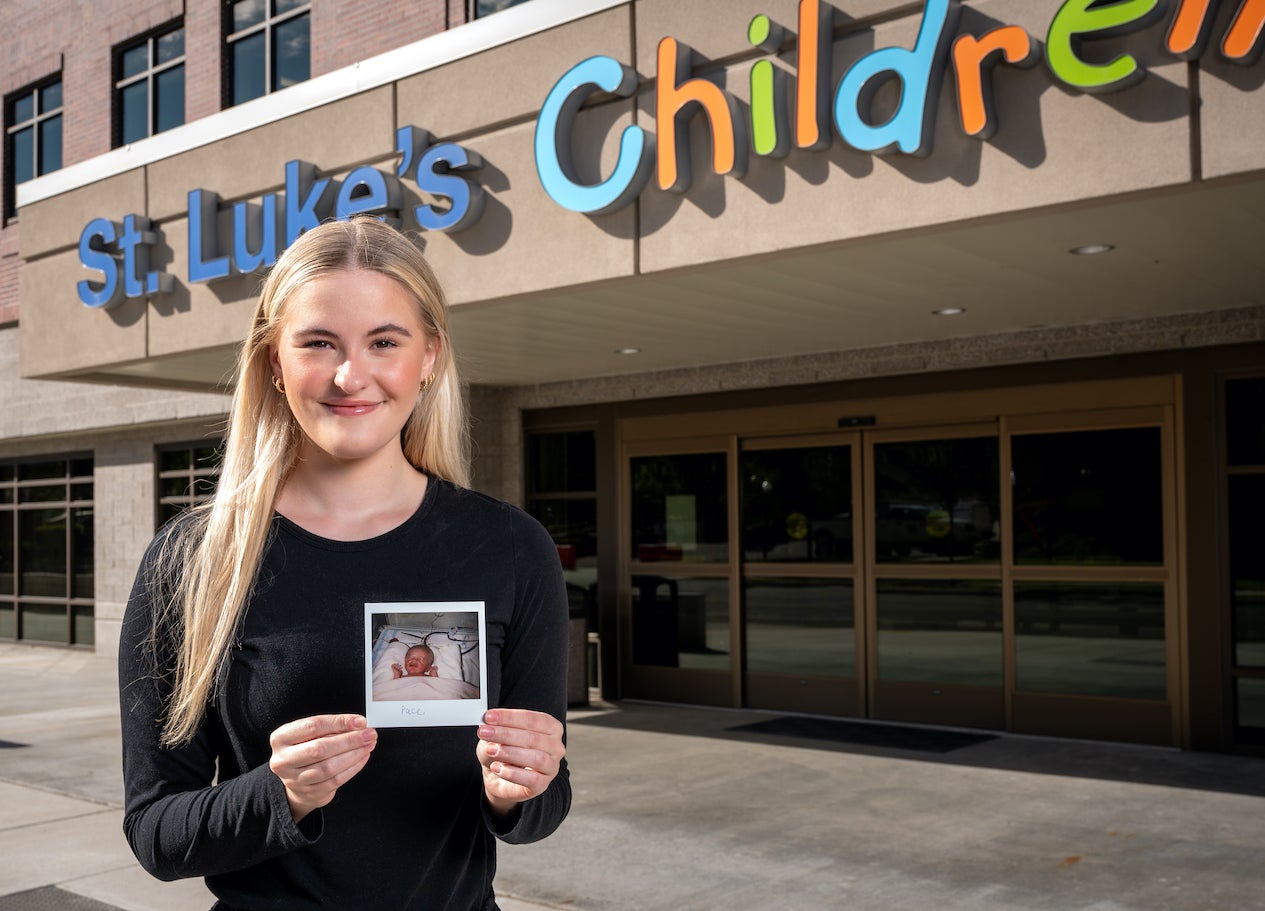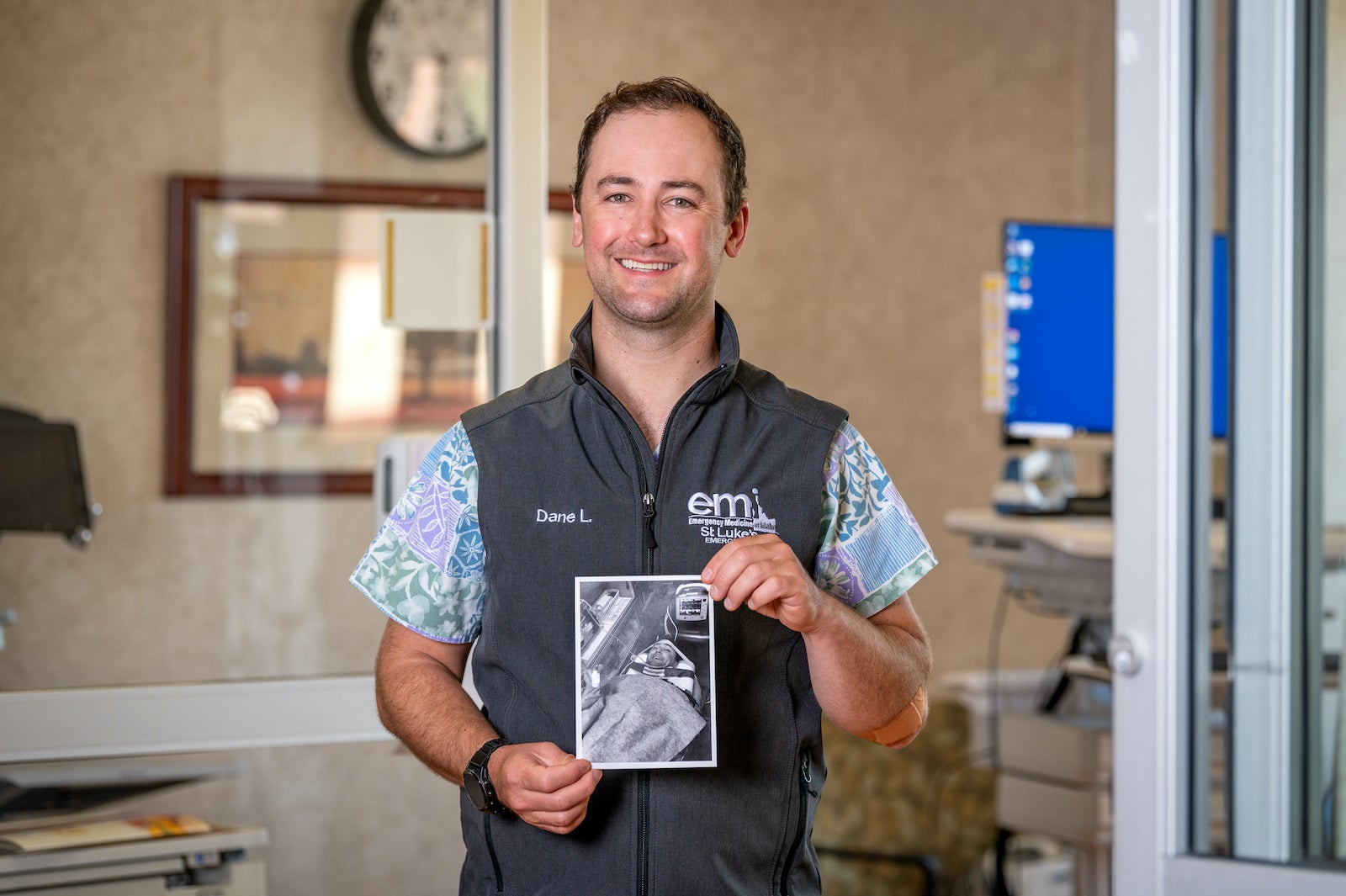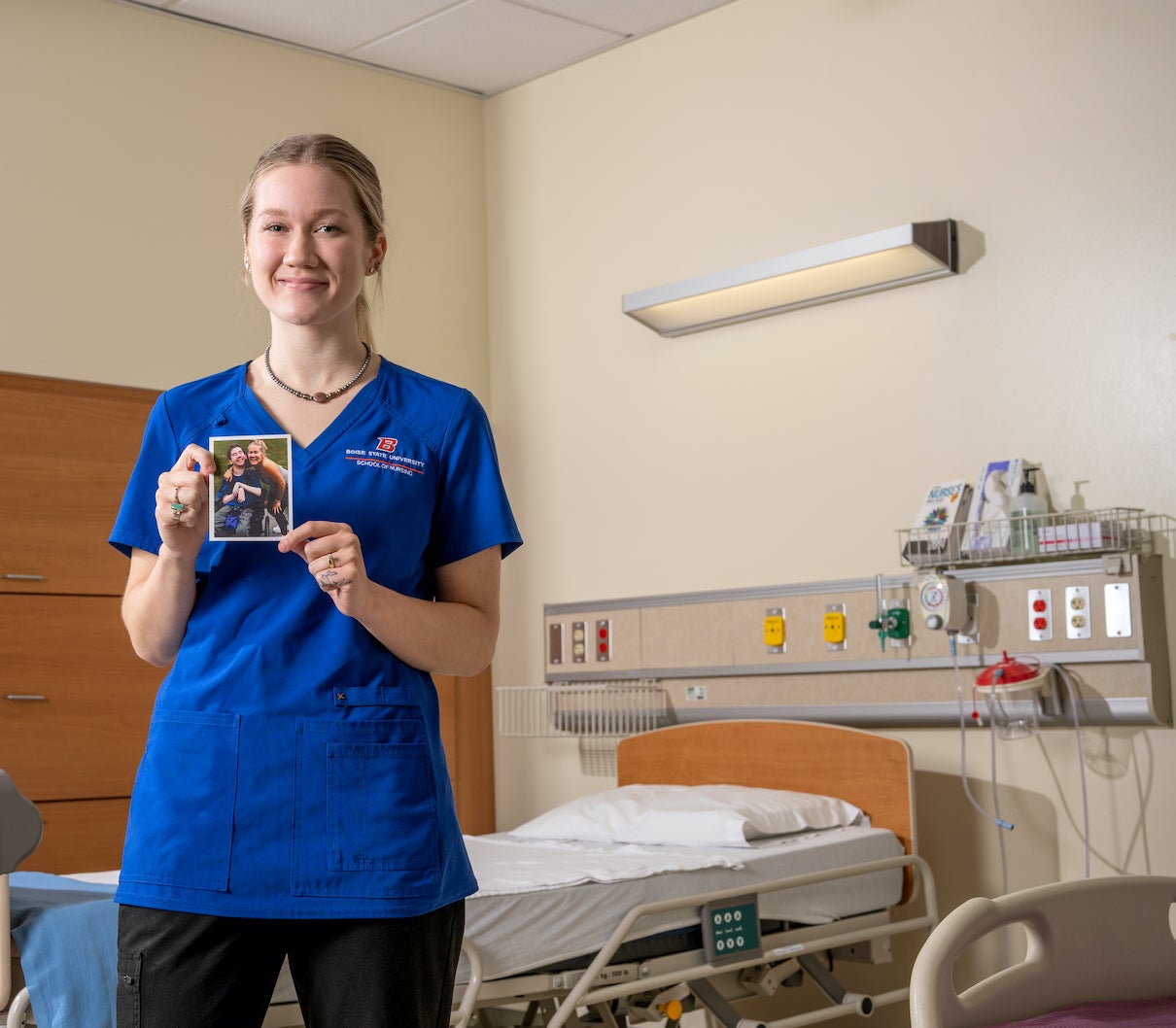
Nursing is one of the most popular academic programs at Boise State and one that dates back to the university’s earliest days. Today, Boise State’s on-campus and online programs produce nurses prepared for the workforce.
Meet accomplished graduates and a current student share their stories about why they chose this vital profession.
Amanda Pace: Inspired before she could walk
Amanda Pace’s connection to nursing started early in life. “I was a NICU baby,” she said, referring to the neonatal inten- sive care unit. Pace (BS, nursing, 2022) is from Coeur d’Alene, Idaho. She spent her childhood in and out of hospitals as she battled complex health issues. Reflecting on her struggles, it’s the nurses who stand out in Pace’s memory.
One pediatric night shift nurse brought popsicles and “Scooby Doo” episodes to the ward, making Pace feel “so calm and special.” Pace recalled another nurse vividly: “She had dark hair and the most beautiful smile, and she made it more like, ‘I’m here for you’ not ‘I’m here to figure out what this is.’”
Experiencing deep, personal care first- hand inspired Pace to become a nurse.
“I wanted to be that for somebody else,” she said. “We need more nurses who understand that it’s not just the disease or the illness, it’s the person. That’s what made the biggest difference to me.”
Now, Pace brings this kind of empathy to her work in St. Luke’s neonatal intensive care unit in Boise. “I feel like I’ve come full circle,” she said.
Although many people find working with hospitalized babies too emotionally difficult, Pace doesn’t. “It’s the little wins that make me happy,” she said. “We all have our place and I’m just excited to find mine.”

Dane Larson: A once-in-a-lifetime experience…twice
Alum Dane Larson (BS, nursing, 2022) didn’t go looking for a career in healthcare; in reality, the career found him. At age 18, he survived a violent attack that was “super random” and “very scary,” he said. But Larson wasn’t panicky or hysterical riding in an ambulance to the hospital. Instead, he was fascinated by everything happening around him. He laughs to think about it now because “that’s such an emergency department mindset,” he said. “I was like, ‘Whoa! This is really cool. I could see myself doing this.’”
So he did. At the advice of an emergency room technician, Larson, who hails from Santa Barbara, California, earned his Emergency Medical Technician certification. One of his favorite co-workers was a “really salty, hardcore nurse” who had been a combat medic in Vietnam. The two connected and the more Larson learned about nursing, the more he considered the career. But as he was preparing to apply to nursing schools, he suffered another setback.
Larson is an experienced rock climber. Two years before he began the nursing program at Boise State, he used his climbing gear to climb a tree in order to trim its branches. But “trees are gnarly,” Larson said. As he cut a three-foot thick bough, it sheared off the limb on which he sat. He fell 35 feet to the ground, breaking his neck, back and forearm.
“The only times that I’ve been to the emergency department as a patient — twice — have been as priority one trauma activations,” Larson said.
He now brings this uniquely empathetic viewpoint into his job as a nurse in the intensive care unit at St. Luke’s Medical Center in Boise.
“Would I change my experience? Absolutely not,” Larson said. “I’m so glad that I went through all of that because it greatly informed my ability to put myself in the shoes of a patient.”

Meagan Mulligan: Taking an advocate’s role
Nurses don’t just leave a lasting impact on their patients; junior nursing major Meagan Mulligan knows firsthand how much they also impact patients’ families. Her older brother, Connor, was born with Pelizaeus-Merzbacher disease, a rare genetic disorder that affected his central nervous system.
Growing up in Duvall, Washington, Mulligan had a front-row seat to a lifetime of nursing care. Much of her childhood was spent in doctors offices or hospitals, toted along to her brother’s specialists. But she wasn’t drawn to become a doctor; it was the nurses’ constant presence and support that made the biggest impact.
In one instance, a nurse urged her mother not to agree to a particular medicine; a doctor prescribed it to be administered intramuscularly, but Connor used a wheelchair and didn’t have much muscle mass. Mulligan recalls the nurse advocating for her brother, saying that the medicine would cause him pain.
Mulligan realized how important it is for patients to have a compassionate advocate. While her mom did so out of necessity — researching as much as possible about Connor’s condition so she could communicate confidently with doctors about his care — Mulligan now chooses to do so professionally. In addition to nursing school, she works part-time as a certified nursing assistant in the intensive care unit at St. Luke’s in Boise. Her experiences inform how she serves patients, especially those with neurological disabilities and difficulty speaking, like her brother.
“I really take it upon myself to try and make conversation with them even if they can’t speak back,” she said. “My brother was very much mentally there, and I think people often think otherwise, when someone can’t fully verbalize that themselves. When I see other people like that, I want to communicate with them and make them feel like they are heard and that they have a community.”
About the School of Nursing
- The school’s adult gerontology nurse practitioner program was ranked #10 in online master’s in nursing programs by U.S. News & World Report in 2023.
- 2,721 working nurses have graduated with their Bachelor of Science in Nursing since the school launched its online completion program 15 years ago.
- The College of Health Sciences Simulation Center is the first accredited simulation center in Idaho. Its modern technologies and unique simulation scenarios — many based on experiences of real Idaho patients — equip work-ready nurses.
- Every semester, students receive groundbreaking training in components of virtual care and telehealth. In the past year, faculty developed new scenarios to represent a variety of clinical situations, such as a behavioral health facility and patient interactions that reflect the Idaho community. Recent developments include simulations about weight bias, self care and working through an interpreter.